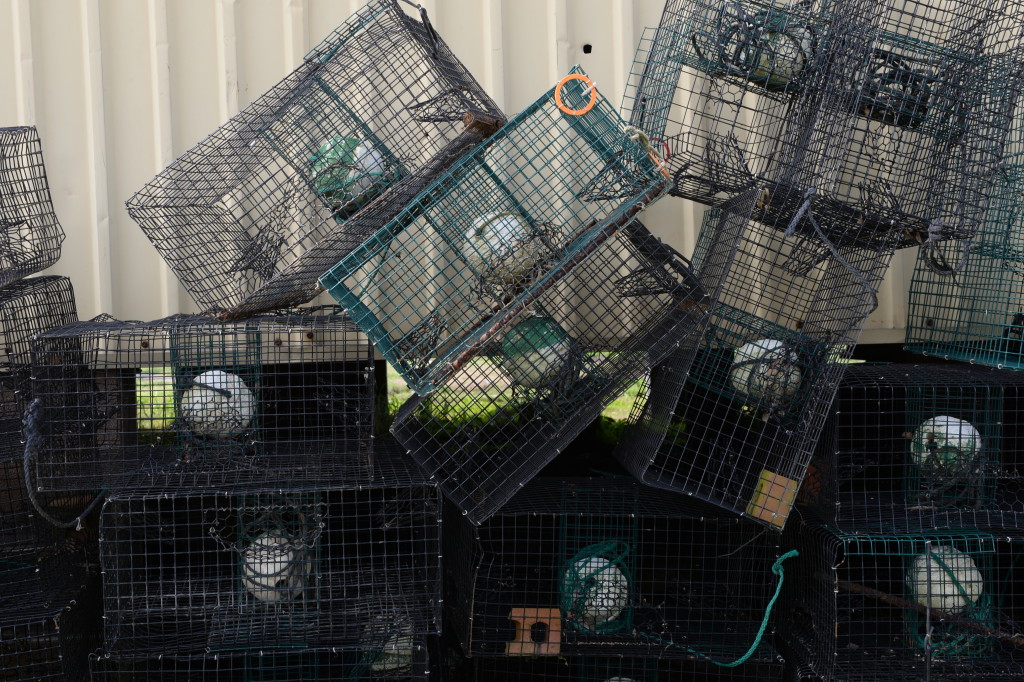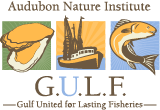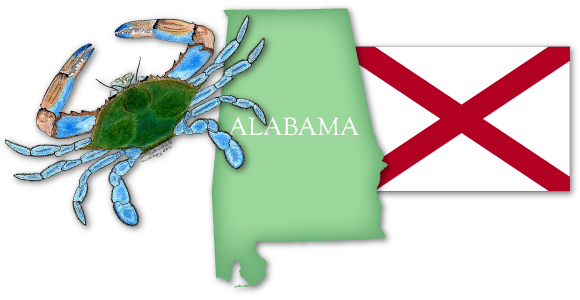Habitat Impacts
Crab traps, the dominant gear used by the commercial fishery, are a relatively selective gear and are considered to have low impact on the environment due to static placement and use on low-sensitivity mud bottoms and oyster reefs (Guillory et al. 2001). Alabama has a derelict trap cleanup program to address habitat impacts and reduce ghost fishing (Derelict Trap Task Force 2008).
Bycatch and Discards
 Crab traps do not cause high bycatch mortality and allow for live catch with minimal waste. Across the Gulf of Mexico, 23 finfish species, including recreationally significant species such as spotted seatrout, red drum, black drum, and southern flounder have been documented in blue crab traps (Guillory et al. 2001). Other invertebrates may also be caught in traps. Traps are relatively size-selective, and target a limited size range due to the diameter of trap funnels. Commercial fishermen cannot retain crabs smaller than five inch carapace width (Alabama Admin. Code r.220-3-.31). Under certain circumstances, smaller crabs may be harvested for shedding, but only if the crab is in a preliminary pre-molt stage (Alabama Admin. Code r.220-3-.31). Additionally, ADCNR has closed areas in nursery habitats, such as north of the CSX bridge, that minimizes catch of sublegal crabs (Derelict Trap Task Force 2008, Alabama Admin. Code r.220-3-.31).
Crab traps do not cause high bycatch mortality and allow for live catch with minimal waste. Across the Gulf of Mexico, 23 finfish species, including recreationally significant species such as spotted seatrout, red drum, black drum, and southern flounder have been documented in blue crab traps (Guillory et al. 2001). Other invertebrates may also be caught in traps. Traps are relatively size-selective, and target a limited size range due to the diameter of trap funnels. Commercial fishermen cannot retain crabs smaller than five inch carapace width (Alabama Admin. Code r.220-3-.31). Under certain circumstances, smaller crabs may be harvested for shedding, but only if the crab is in a preliminary pre-molt stage (Alabama Admin. Code r.220-3-.31). Additionally, ADCNR has closed areas in nursery habitats, such as north of the CSX bridge, that minimizes catch of sublegal crabs (Derelict Trap Task Force 2008, Alabama Admin. Code r.220-3-.31).
Previous: History of Alabama Blue Crab Fishery Next: Species of Concern




